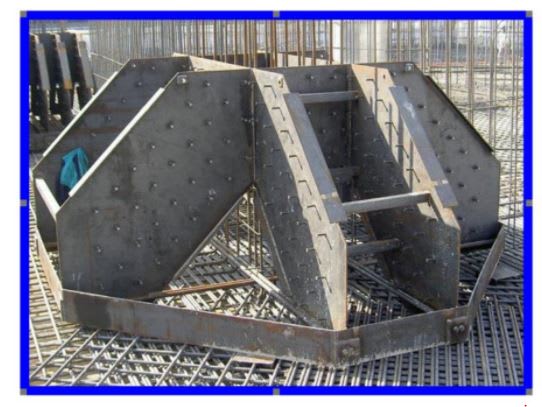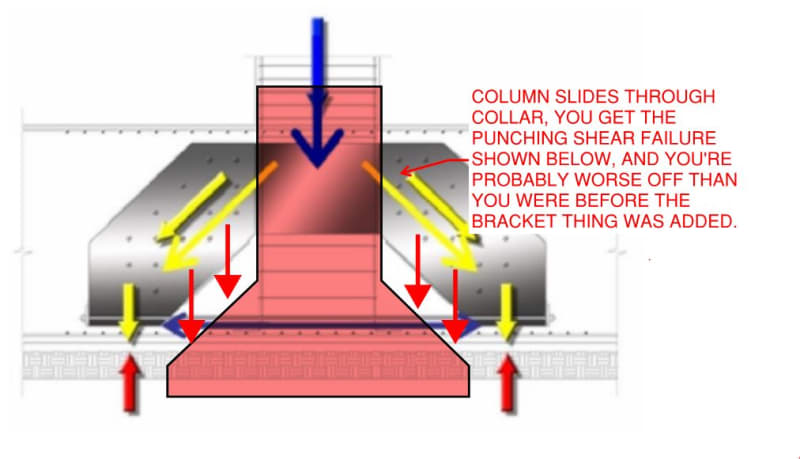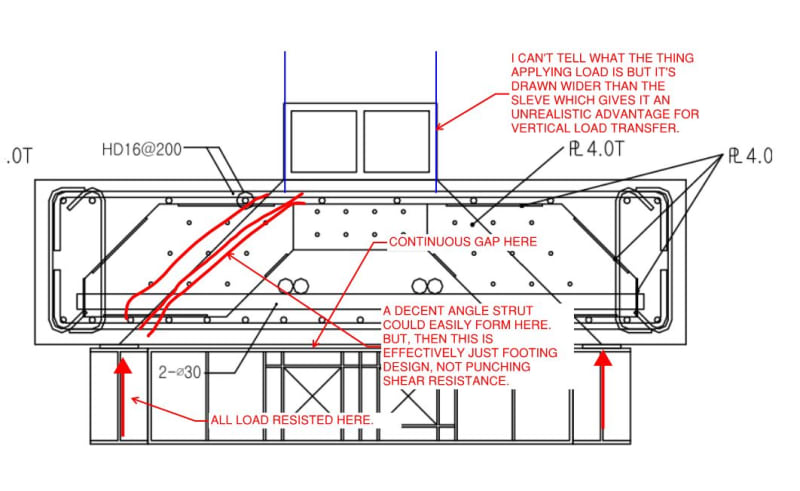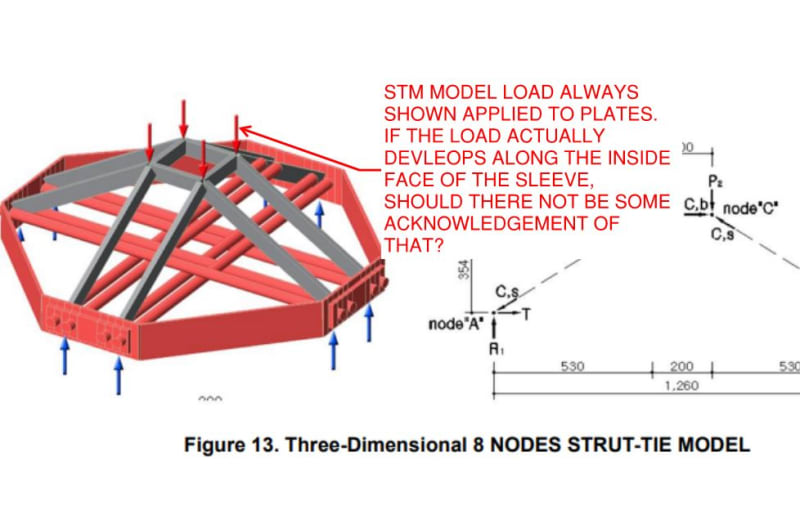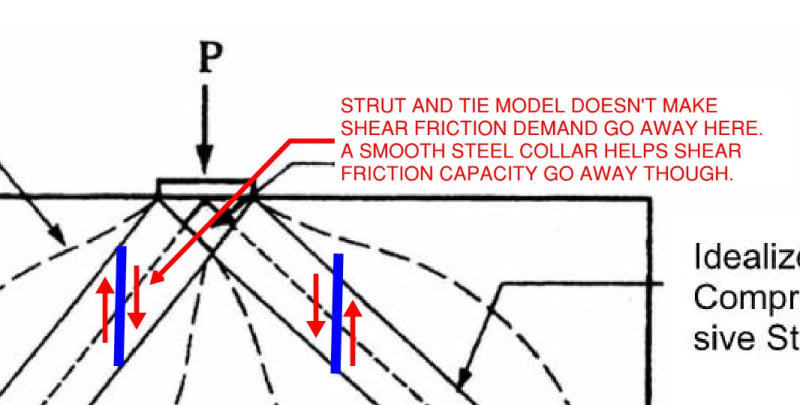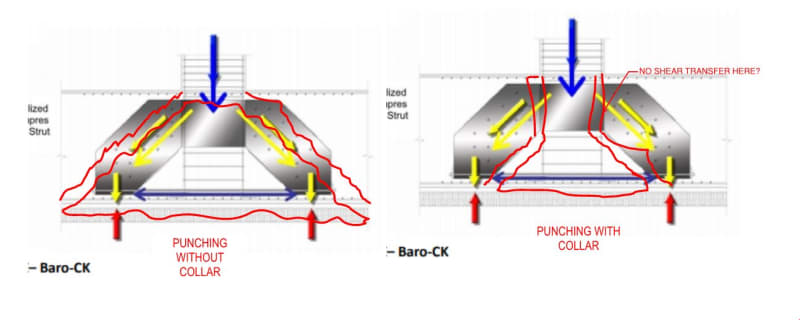hokie66 said:
A contrarian view, if I may.
By all means, I was
hoping for some contrarian views and have been starting with the assumption that it is I who is confused about things. It seem almost unfathomable that this could get designed, peer reviewed, tested, fabricated, and installed in an 80 story building in Korea if it actually does have the fatal flaw in it that I see.
So I'll contest you support of this a bit, as I am want to do...
hokie66 said:
the 'collar' serves to confine the concrete within.
1) Does a column embedded in a reinforced mat slab
need extra confining? That, particularly, given that the column should shed it's axial load as it makes its way through the mat?
2) I contend that a square sleeve would make for pretty crappy confinement. As the side walls bow out, they'd be restrained by the concrete and you'd kind of be back to the no sleeve confinement situation. I suppose that you could get some meaningful confinement in the corners kind of like we do with rectangular column ties.
3) Effectiveness aside, how do you see confinement helping with vertical load transfer? Are you pondering, as I have, a situation in which the column dilates into the sleeve and engages it for shear transfer that way? My issues with that are:
a) That strikes me as almost as dubious as counting on friction for vertical load transfer and;
b) If that's the mechanism, why doesn't the paper say anything about it? The story told is STM, start to finish.
hokie66 said:
...and I think the setup does resemble real world practice.
I disagree, although it's frankly difficult for me to tell just what the test setup was in the various situations. Yes to the 200x200 stub columns, however:
4) The one way setup had the ribs passing beneath the column which is cheating.
5) For the two way setup, the load applying thing seems to be wider than the sleeve which is cheating.
6) More than anything, the transfer of load into discrete supports over a short shear span is
big time cheating. At that point, you're just testing a modified pad footing design, not punching shear force transfer into surrounding concrete. One of my best guesses on this is that, despite contrary language in the paper, they really just mean for this to be an enhanced footing design?? But, then, do we actually have an existing problem with footing design that this would be solving? don't see it.
